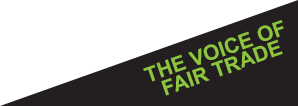In the beginning, Fair Trade Organizations traded mostly with handcrafts producers, mainly because of their contacts with missionaries. Often, crafts provide “supplementary income” to families; they are of crucial importance to households headed by women who have limited employment opportunities. Most Northern Fair Trade Organizations focused on buying these crafts and sold them through World Shops. The market for crafts through these World shops was wide open and for many Fair Trade Organizations sales grew and grew.
In 1973, Fair Trade Original in the Netherlands, imported the first “fairly traded” coffee from cooperatives of small farmers in Guatemala. Now, more than 30 years later, Fair coffee has become a concept. Meanwhile hundreds of thousands of coffee farmers have benefited from Fair Trade in coffee. And in Europe more and more consumers drink Fair coffee. Right now between 25 to 50 % of turnover of Northern Fair Trade Organizations comes from this product.
After coffee, the food range was expanded and it now includes products like tea, cocoa, sugar, wine, fruit juices, nuts, spices, rice, etc. Food products enable Fair Trade Organizations to open new markets, such as institutional markets, supermarkets and bio shops. In addition to these food products, other non food products such as flowers and cotton have been added to the Fair Trade assortment.





